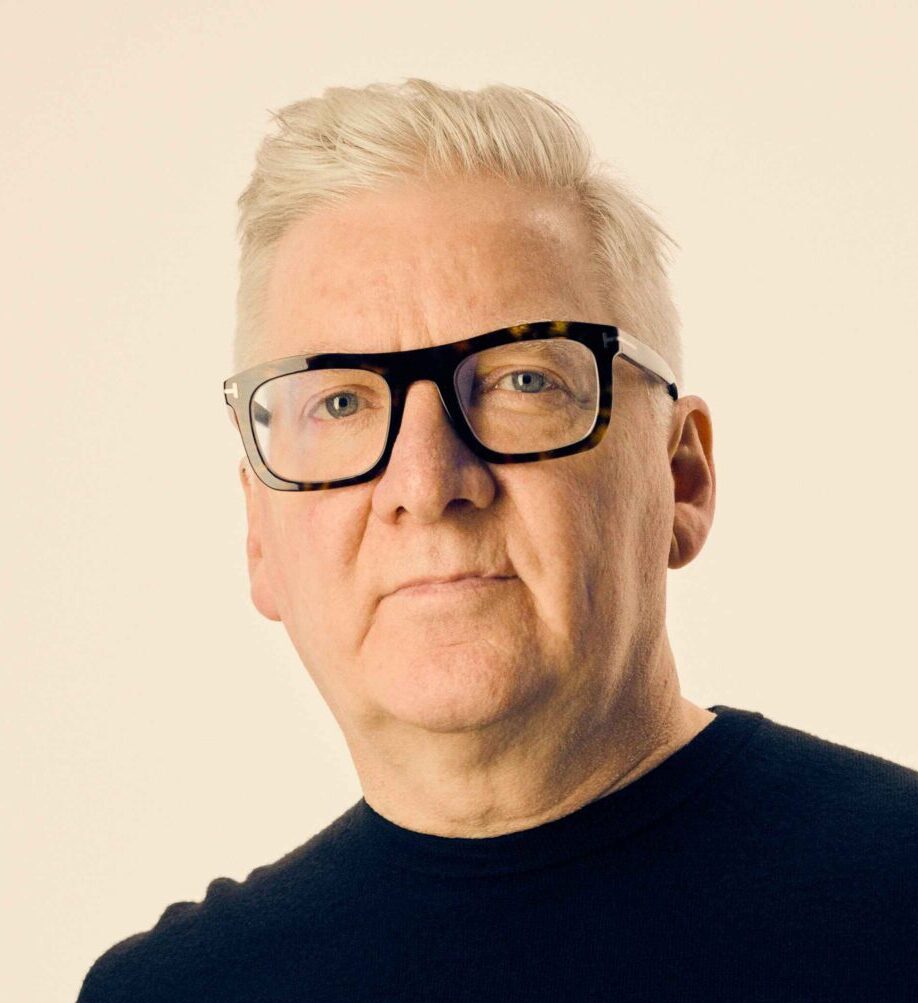Black Friday has become a fixture of the UK shopping calendar. It’s when wish lists turn into purchases and people actively look for the best deals of the year, making it one of the most important opportunities in the retail calendar.
For small businesses, this concentrated demand brings a rare opportunity to boost sales, attract new customers, and build lasting relationships. In this guide, we’ll explore shopping trends for Black Friday 2025 and share practical steps to help your business make the most of this year’s seasonal demand.
Key takeaways
- Shoppers expect flexible delivery, eco-conscious options, and genuine discounts when choosing where to spend on Black Friday.
- Platforms like TikTok and Instagram now shape how customers discover and buy deals during peak shopping periods.
- Strong Black Friday results depend on early promotions, seamless digital journeys, and follow-ups that encourage repeat business.
Why Black Friday matters for small UK businesses
The event first arrived in the UK in 2010, crossing over from the United States. Since then, it has grown into the largest shopping weekend of the year, extending to Cyber Monday. In 2025, Black Friday falls on Friday 28 November – a date already anticipated by retailers and customers alike. For small businesses, this is a moment worth preparing for. The event concentrates consumer attention in a way few other periods do. Customers are actively searching, comparing, and deciding, which means even a smaller retailer can gain visibility if the right offer is in place.
- 11 festive marketing ideas for small businesses in 2025
- How to scale your small business
- Important dates for UK business owners in 2025
The opportunities Black Friday presents
Black Friday is also a rare chance to reach new audiences. Shoppers who might normally head straight to major chains are often more open to browsing alternatives during Black Friday, provided the experience feels competitive and trustworthy. For an independent business, this makes it one of the best entry points to build long-term relationships with first-time buyers.
Finally, timing plays a role. After several years shaped by the pandemic and the cost-of-living crisis, some signs of renewed consumer confidence are starting to appear, as reported by Reuters. Black Friday will be among the first tests of that optimism at scale, offering businesses a timely opportunity to capture demand and carry momentum into December.
Key Black Friday shopping trends in 2025
The businesses that thrive during Black Friday are those that pay attention to shopper priorities. Research in 2025 points to four areas of focus: delivery, sustainability, social visibility, and technology.
Delivery shapes decisions
DHL’s E-Commerce Trends Report 2025 found that four in five UK consumers will abandon a purchase if delivery does not suit their needs. People want speed, affordability, and flexible options. For small businesses, offering home delivery alongside services such as click-and-collect with local shops can provide the choice that customers expect.
Sustainability influences loyalty
One in four shoppers says they will leave a purchase unfinished if they feel it’s environmentally irresponsible. How products are packaged, the visibility of recycling schemes, and clear communication about sustainable practices all make a difference to customer decisions.
Social media is the new shop window
Consumer behaviour continues to shift toward platforms like TikTok and Instagram. By 2030, more than half of UK shoppers expect to buy most through social channels. Already, these platforms are key places for discovering and purchasing Black Friday deals. Businesses that prepare strong campaigns here will find themselves where their customers are already spending time.
Technology raises expectations
Nearly 60% of British consumers now want AI support during shopping. That may mean personalised product suggestions, AI product try-ons, or simple chatbots that answer common questions.
These tools can be light-touch and affordable, yet they signal attentiveness and help customers feel supported throughout their purchase.
A broader view: global buying patterns
DHL’s 2025 Black Friday Buying Behaviour Report shows that three in four shoppers worldwide plan to make a purchase over Black Friday and Cyber Monday. Electronics remain the leading category at 37% of sales, followed by clothing at 32%, with a strong interest in footwear, home furnishings, beauty, and toys. Discounts remain the strongest draw, but exclusivity and limited access are also major motivators.
8 top tips to prepare your small business for Black Friday
1. Set clear sales and marketing goals
Clear objectives are the foundation of any successful campaign. Ask yourself: what does your business most want to gain from Black Friday? This could be higher revenue, new customer acquisition, increased mailing list subscriptions, or improved brand visibility.
By setting specific goals early, you create benchmarks to measure against once the event is over. You also ensure your efforts are channelled in a deliberate direction, rather than spread too thinly.
2. Identify and prepare your best products
The right products in the right quantities make all the difference. Start with your sales data. Look at your year-to-date records and highlight which products have consistently driven the most revenue. These are likely to perform strongly during Black Friday.
You can expand this picture through social listening. This approach involves tracking conversations on social media about keywords, industry hashtags, brand mentions, and competitor activity. It shows you, in real time, what people are discussing and what products they are excited about.
How to set up social listening
- Define your goals – Decide whether you want to learn more about competitors, spot industry trends, or understand how often your brand is mentioned.
- Choose the right platform – If you want to monitor conversations, X (formerly Twitter) may work best. For product mentions and visual trends, Instagram can be more effective.
- Build your keyword list – Include your brand name (with possible misspellings), competitor brand names, industry search terms, and relevant demographics.
- Use a management tool – Software such as Hootsuite offers free accounts and allows you to organise, filter, and measure the data you collect.
With this information, you can make smarter decisions about which products to highlight and how much stock to prepare.
3. Plan competitive and sustainable discounts
Once you know which products you want to spotlight, it’s time to decide on discounts. The goal is to balance attractive pricing with healthy profit margins.
Popular discount structures include:
- Bundle offers – pair complementary products together or group slower-moving items with bestsellers.
- Free gift with purchase – reward customers when they spend over a certain amount.
- Minimum 20% off – clear, simple offers that signal genuine value.
- Exclusive one-time deals – limited in quantity or time, creating urgency.
Customers look for authenticity during Black Friday. They expect sales that feel unique to the occasion and are worth acting on immediately.
Sustainability can also be built into your discounting. For example, offering discounted “green bundles”, highlighting eco-friendly products, or rewarding customers for choosing low-impact options can set your brand apart while aligning with consumer values.
4. Start promoting offers early
Black Friday may fall at the end of November, but customers start planning long before then. Many people rely on Black Friday to buy Christmas presents, so the earlier you build anticipation, the more likely they are to put your business on their shortlist.
Starting early also builds retention. Customers who feel included in the lead-up are more likely to stay engaged with your business after the sale.
Emailing your subscribers a few weeks ahead is a good starting point. Keep the subject line clear and enticing – something that hints at the offers without giving everything away. Let people know the dates of your sale and the types of discounts they can expect so that they can budget and plan their purchases.
Social media works just as well for early promotion. Platforms like Instagram, Facebook, and X are great for giving teasers, posting countdowns, or sharing “sneak peek” offers. Regular posts in the lead-up keep your brand visible and maintain excitement.
5. Optimise your website and digital platforms
Your website is the front door to your business – and on Black Friday, many more people will be knocking. Research from Statista shows that over 80% of the UK population shops online, so ensuring your site is smooth, fast, and reliable should be a top priority.
Do a few test runs in advance. Can your site handle extra traffic? Are there any bugs or broken links that need fixing? Is checkout fast and simple? Addressing these issues early avoids last-minute panic.
This is also the moment to improve the customer experience. Consider:
- Adding faster payment methods such as Apple Pay, Google Pay, or buy now–pay later.
- Creating a dedicated Black Friday landing page to group all your offers in one place.
- Reviewing checkout steps to make sure they’re as quick and hassle-free as possible.
6. Adapt your in-store experience
Even with the growth of online shopping, the high street remains important – especially as the Christmas season approaches. Visiting local shops is still a popular way to spend evenings and weekends, and customers increasingly want to support independent retailers. In fact, according to a Forbes survey, 69% of UK consumers prefer to buy from small businesses unless a large company is necessary.
To make the most of this, refresh your in-store environment ahead of Black Friday. Update your window displays, use bold signage, and make sure your discounts are clear from the street. Flyers and posters can also draw in foot traffic.
If you operate both online and offline, keep your messaging consistent. Use the same design, language, and offers across all platforms. When customers see coherence between your website, social media, and physical shop, it strengthens your brand and creates a seamless experience.
7. Encourage customer engagement and sharing
Your customers can be some of your best promoters. Inviting them to share reviews, photos, or stories about their purchases helps spread the word in a way that feels genuine.
One option is to offer a small discount in exchange for a product review, whether on your own site or an external review platform. Another is to encourage people to post about their purchases on social media. This kind of user-generated content (UGC) is powerful because it’s authentic and relatable.
Research from Nosto shows just how much weight UGC carries, with 81% of millennials, 86% of Gen Z, and 73% of Gen X saying they are more likely to buy products supported by customer photos or videos.
8. Stay authentic to your brand
Black Friday can feel competitive, and it’s easy to be tempted into strategies that don’t align with your values. The strongest campaigns, though, are the ones that stay true to what your brand stands for.
According to Nosto’s survey data:
- 83% of people say they want more authentic shopping experiences
- 88% say authenticity is important when choosing which brand to support
- 70% expect a level of personalisation from the brands they buy from
Small businesses have a natural advantage here. Independent retailers can often deliver unique products, personal service, and a sense of connection that bigger brands struggle to match. So, keep your unique selling points at the centre of your Black Friday plans, and you’ll come through the weekend stronger.
Post-Black Friday strategies to retain customers
Black Friday doesn’t end when the weekend is over. The follow-up is where one-time shoppers can turn into long-term supporters.
Here are three ways to keep momentum going:
- Send thank-you emails – Show appreciation and include a personalised recommendation or a loyalty discount.
- Promote Christmas specials – Encourage Black Friday customers to return for holiday gifts.
- Review your results – Analyse what worked, what fell flat, and what could be improved for next year.
Quick wins checklist
If you’re short on time or just want to ensure you’re covering all the essentials, here’s a quick-reference guide to help you stay on track. Tick off these actions to give your business the best possible shot at Black Friday success:
- Set clear goals for sales and customer growth
- Highlight your best-positioned products, using data and social listening
- Build discount strategies that feel genuine and include sustainable choices
- Begin promotion in October with teasers across email and social media
- Test your website for speed, checkout simplicity, and mobile performance
- Refresh in-store displays to attract local shoppers who want to support small businesses
- Share content on TikTok and Instagram – where customers are increasingly browsing and buying
- Use light-touch AI tools (such as chatbots or recommendation features) to guide shoppers smoothly
- Encourage reviews and user-generated content
Support your success with expert services
Whether you’re gearing up for your first Black Friday or refining your strategy after a few seasons, the right support makes a real difference. Every smart campaign starts with solid foundations, including having your company set up properly, your operations streamlined, and your details in order.
Our formation services help thousands of UK businesses form and grow with confidence. From company formation and registered office addresses to business mail forwarding and VAT registration, we take care of the admin so you can focus on making your Black Friday the most successful one yet.














Join The Discussion